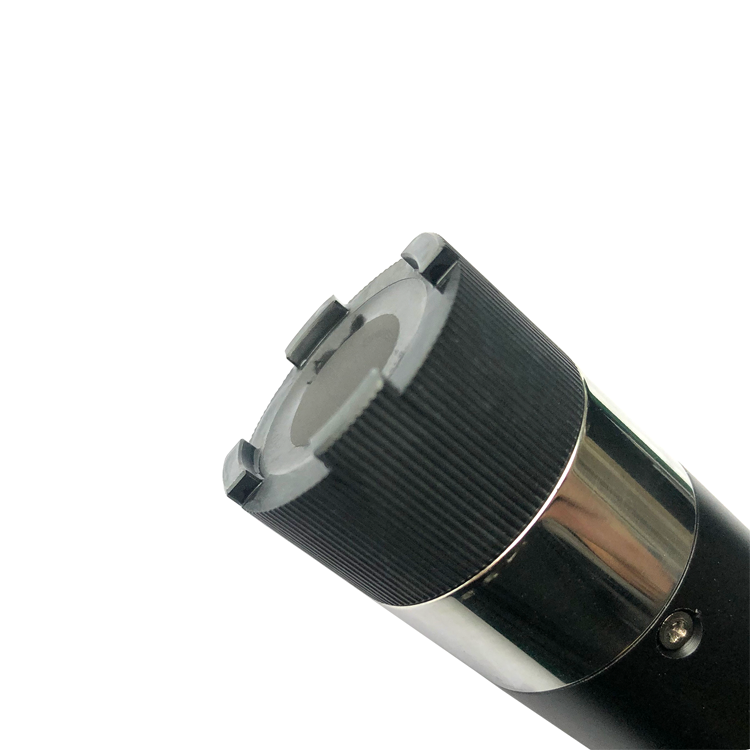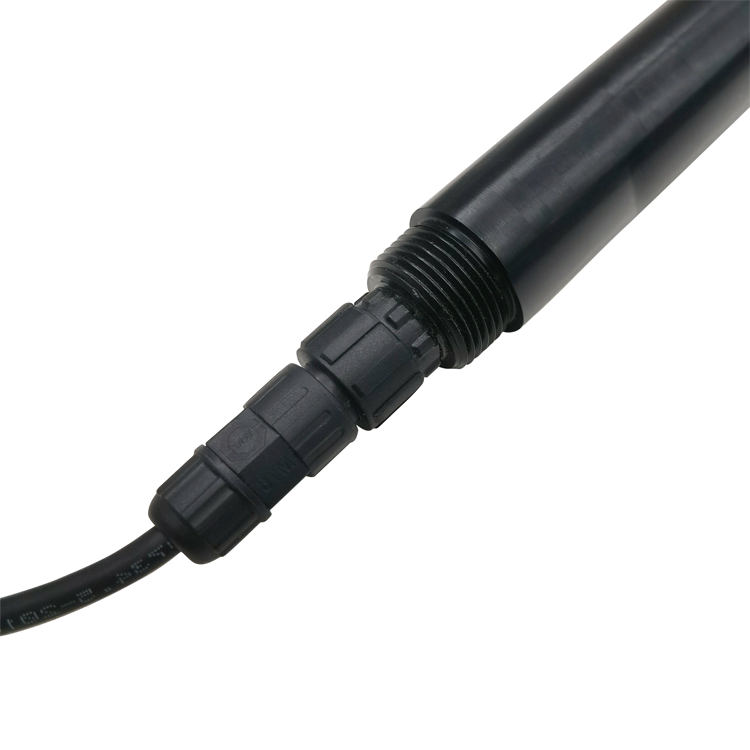

— Blogs —
—Products—
 Consumer hotline +8618073152920
Consumer hotline +8618073152920 WhatsApp:+8615367865107
Address:Room 102, District D, Houhu Industrial Park, Yuelu District, Changsha City, Hunan Province, China
Product knowledge
Time:2025-10-15 15:41:29 Popularity:424
Dissolved oxygen (DO) is the amount of molecular oxygen (O₂) dissolved in water, directly determining the survival threshold for aquatic organisms like fish and algae—below 3mg/L enters the low-oxygen alert zone. In environmental fields, DO serves as the "barometer" for monitoring river self-purification capacity and lake eutrophication; in industrial wastewater treatment, it controls aeration efficiency, relating to energy consumption and emission compliance. The global dissolved oxygen sensor market is expanding rapidly, expected to reach $487 million in 2025, and rise to $720 million by 2030 with an 8% compound annual growth rate (CAGR). This growth stems from the rise of optical technologies and IoT integration, driving full-scenario monitoring from laboratories to field sites.
However, the reliability of DO data highly depends on the probe itself. Traditional electrochemical methods, though mature, require frequent maintenance; emerging fluorescence methods are renowned for low intervention. Choosing the right technology, proper calibration, and scientific maintenance ensure the "water quality lifeline" is guarded impeccably. Next, we dissect layer by layer to ensure you navigate water quality monitoring with ease.
DO probe technology has evolved through iterations, with mainstream categories now divided into electrochemical (polarographic and galvanic) and optical (fluorescence) types. The following table compares their principles, pros and cons, and applicability for quick decision-making:
| Technology Type | Working Principle | Core Advantages | Main Limitations | Typical Applications |
| Polarographic | Applies voltage to platinum cathode/silver anode; oxygen diffuses through membrane and reduces to produce current (O₂ + 4e⁻ + 2H₂O → 4OH⁻), with current proportional to DO concentration. | High accuracy (±0.1mg/L), stable response, mature technology. | Requires 15-30 min warm-up, highly affected by flow rate, membrane/electrolyte replacement every 3-6 months. | Laboratory high-precision measurements, fixed river monitoring stations. |
| Galvanic | Utilizes electrode potential difference (e.g., lead/silver) to spontaneously generate current without external power; principle similar to polarographic. | Ready to use on startup, fast response (<30s), highly portable. | Fast electrode consumption (lifespan 1-2 years), slightly lower accuracy (±0.2mg/L). | Field portable testing, rapid screening of outdoor water samples. |
| Fluorescence (Optical/Luminescence) | Blue LED excites fluorescence cap; oxygen molecules quench fluorescence (calculated via Stern-Volmer equation for decay τ), no electrolytic consumption. | Zero maintenance, unaffected by flow rate/temperature, long lifespan (cap 2-5 years); optical DO market share exceeds 40% in 2025. | Higher initial cost, weak resistance to strong light. | Wastewater treatment aeration tanks, long-term online environmental monitoring. |
Fluorescence methods are becoming the mainstream trend in 2025, with their membrane-free design avoiding traditional pain points and promoting miniaturization and wireless integration. When selecting, prioritize environmental complexity: fluorescence for turbid waters, polarographic for precision labs.
Probe Selection, Calibration, and Maintenance: Full Guide from Deployment to Long-Term Operations
The practical value of DO probes is 80% derived from correct selection and maintenance. Neglecting these can lead to errors over 20%, resulting in eutrophication misjudgments or aeration waste.

- Wastewater treatment aeration tanks: Fluorescence method preferred. High turbidity and microbial films easily clog electrochemical membranes; fluorescence caps directly immerse in water, extending maintenance cycles to once a year. Recommend IP68-rated probes with integrated self-cleaning brushes.
- River/lake environmental monitoring: Polarographic or fluorescence combined. Requires anti-biofouling functions (e.g., UV self-cleaning), range 0-20mg/L, response <60s. Remote stations select solar-powered versions.
- Laboratory/high-purity water: Polarographic reliable. Accuracy up to ±0.05mg/L, compatible with multi-parameter integration (e.g., pH/DO combined measurement).
Additional metrics: Check temperature compensation (-5~50°C), output protocols (4-20mA/Modbus), and certifications (CE/ISO).
Calibration is the cornerstone of accuracy, recommended quarterly. Fluorescence methods are simple to operate:
1. Zero-point calibration: Immerse in 0.1% sodium sulfite solution (anaerobic environment), adjust reading to 0mg/L. Verify drift <0.1mg/L.
2. Saturation calibration (100%): Place in humid air (water vapor saturated), input local pressure/temperature to calculate theoretical value (formula: DO_sat = 14.652 - 0.41022T + 0.007991T² - 0.000077774T³, where T is °C). High-end probes have built-in barometers for automatic compensation.
Use standard buffer solutions throughout, avoiding bubble interference. NiuBoL probes support one-key calibration, with errors <0.05mg/L.
- Electrochemical methods: Check membrane integrity every 3 months; replace if damaged (cost <50 yuan). Replenish electrolyte when exhausted to avoid overcharge-induced current drift. Store in wet cloth to prevent cracking.
- Fluorescence methods: Main maintenance is cap cleaning—weekly soft brush + neutral agent wipe for biofilms to prevent fluorescence decay. Cap lifespan 2-5 years, replace without tools. Store in dark to avoid light.
General Tips: Regular firmware upgrades, monitor signal strength logs. Add desiccants in humid areas, preheat in extreme temperatures. These practices can boost system availability to 99%, far exceeding industry averages.
Case: Large Urban Wastewater Treatment Plant DO Closed-Loop Optimization
A medium-sized wastewater treatment plant's aeration tank had annual aeration electricity costs exceeding 5 million yuan; traditional timed control caused DO fluctuations of ±1mg/L, with low efficiency. NiuBoL deployed 10 sets of fluorescence DO probe arrays integrated with variable frequency blower systems: Real-time tracking of DO (target 1.5-2.0mg/L), automatically reducing speed by 30% when exceeding thresholds.
Challenges resolved: Membrane-free design resists sludge clogging, <10s response ensures closed-loop stability. Results? Aeration energy consumption down 25%, annual electricity savings of 1.5 million yuan. Similar to the Des Moines plant case, DO optimization saves $200,000 per year. This not only saves energy but also improves biochemical removal rate by 15%, aiding carbon neutrality goals.
NiuBoL's third-generation fluorescence DO probes lead the market with ±0.01mg/L accuracy and 5-year cap lifespan. We go beyond supply, offering on-site calibration training and remote diagnostics to ensure your monitoring chain has zero deviation.

A: Electrochemical methods rely on oxygen diffusion through membranes, requiring water flow assistance; fluorescence methods directly measure fluorescence quenching in water, with oxygen molecules not needing to "cross" barriers, stable at flow rates 0-5m/s. Actual tests show error fluctuations <0.05mg/L.
A: mg/L is absolute concentration (e.g., 8mg/L), suitable for absolute threshold alarms; %Sat is relative value (current DO / saturated DO ×100%), greatly affected by temperature and pressure, used to assess water body's "oxygen debt." Water quality reports often run both tracks in parallel.
A: Yes. Every 10kPa drop in atmospheric pressure reduces saturated DO by about 1mg/L. High-end probes like NiuBoL's have built-in sensors for automatic correction; manually, check local weather apps for values to ensure accuracy ±0.1mg/L.
A: Fluorescence method is best, with cap anti-fouling design resisting algal interference. Combined with self-cleaning mechanisms, daily automatic flushing keeps accuracy unchanged under turbidity <1000NTU. Electrochemical methods need protective sleeves but double maintenance.
A: Optical miniaturization and AI integration—probe size shrinks to fingertip scale, supporting wireless Mesh networking. Market predictions: Optical share will surge from 30% to 50%, driving intelligent wastewater treatment.
Prev:Top 5 Industrial Applications for Ultrasonic Liquid Level Sensors in Tanks & Silos
Next:How Ultrasonic Water Flow Meters Work: Principles, Advantages, and Applications
Related recommendations
Sensors & Weather Stations Catalog
Agriculture Sensors and Weather Stations Catalog-NiuBoL.pdf
Weather Stations Catalog-NiuBoL.pdf
Related products
 Combined air temperature and relative humidity sensor
Combined air temperature and relative humidity sensor Soil Moisture Temperature sensor for irrigation
Soil Moisture Temperature sensor for irrigation Soil pH sensor RS485 soil Testing instrument soil ph meter for agriculture
Soil pH sensor RS485 soil Testing instrument soil ph meter for agriculture Wind Speed sensor Output Modbus/RS485/Analog/0-5V/4-20mA
Wind Speed sensor Output Modbus/RS485/Analog/0-5V/4-20mA Tipping bucket rain gauge for weather monitoring auto rainfall sensor RS485/Outdoor/stainless steel
Tipping bucket rain gauge for weather monitoring auto rainfall sensor RS485/Outdoor/stainless steel Pyranometer Solar Radiation Sensor 4-20mA/RS485
Pyranometer Solar Radiation Sensor 4-20mA/RS485
Screenshot, WhatsApp to identify the QR code
WhatsApp number:+8615367865107
(Click on WhatsApp to copy and add friends)
